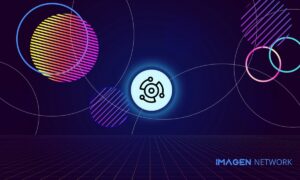In today’s world, artificial intelligence (AI) plays an indispensable role in our daily lives. Acknowledging the pioneering minds that paved the way for this transformative technology is of utmost importance. Alan Turing stands out as a visionary figure whose groundbreaking research and innovative ideas reshaped history. This article explores the remarkable journey of Turing’s contributions, demonstrating how his brilliance not only paved the path for AI but also catalyzed its evolution into contemporary marvels like Transformers. Prepare to be enthralled by his story and inspired by the boundless potential in our AI-driven universe.
Introduction to Alan Turing and His Achievements
Alan Turing, a British mathematician, computer scientist, and cryptanalyst, left an indelible mark on mathematics, computer science, and artificial intelligence. His most renowned achievement was his pivotal role in deciphering the Enigma machine during World War II, a contribution that played a pivotal role in the Allied victory. Post-war, he worked on early computer development at the National Physical Laboratory and Manchester University. In 1950, he introduced the concept of a test to determine a machine’s ability to exhibit intelligent behavior, now known as the Turing Test, a standard for AI evaluation. Additionally, Turing made significant strides in artificial neural networks, which underpin contemporary machine learning algorithms.
Turing’s Impact on Artificial Intelligence
Alan Turing’s 1950 proposal of the Turing Test, aimed at assessing a machine’s thinking capabilities, laid the foundation for modern AI. His ideas continue to underpin the development of AI technologies. The Turing Test, involving human-machine conversations, has fostered advances in natural language processing and chatbot development.
Moreover, Turing conceptualized a learning machine, an early form of artificial neural networks. His work demonstrated that machines could learn from data, mirroring human learning processes. This forms the basis for today’s machine learning algorithms. Without Turing’s pioneering contributions, contemporary AI as we know it would not exist, and his legacy perpetuates AI’s growth.
The Evolution of AI in the Modern World
Modern AI owes a substantial debt to Alan Turing’s work in the 1940s. AI’s development has been further propelled by advances in computing power and data storage capacity.
Today, AI finds application in diverse areas, ranging from basic search algorithms to complex domains like autonomous vehicles and facial recognition. As AI continues to advance, it is poised to assume an increasingly influential role in our lives. Nevertheless, ethical and safety concerns, particularly in autonomous decision-making and data privacy, necessitate responsible innovation and regulation to ensure AI benefits society.
Examples of Contemporary AI Applications
In its infancy, AI was confined to task-specific machines, such as chess-playing computers and mathematical problem solvers. A notable early example is ELIZA, a 1966 program emulating a therapist’s responses in conversations, still employed in research and education today.
AI applications have since diversified, including expert systems tailored to specific domains and natural language processing (NLP) for human language comprehension. NLP finds application in automated customer service, machine translation, and text analysis.
Contemporary AI transcends its historical limitations, revolutionizing various industries. Healthcare benefits from AI in disease detection, personalized treatments, and error reduction. The financial sector employs AI for fraud detection, automated trading, and informed investments. AI enhances manufacturing processes, streamlining supply chain operations, and personalizes retail experiences through product recommendations and customer behavior analysis.
The Transformation of AI into Transformers
In his 1950 paper “Computing Machinery and Intelligence,” Alan Turing introduced the Turing Test as a benchmark for AI. Subsequent decades witnessed remarkable progress in AI, particularly in robotics.
Robots have transitioned from industrial applications to everyday life, exemplified by personal assistants like Amazon’s Alexa and Apple’s Siri, powered by AI. Devices like the Roomba vacuum cleaner utilize AI for navigation within homes.
One striking evolution is the emergence of Transformers, iconic robots-in-disguise from the 1980s. Transformers showcase AI’s capacity to create lifelike robots, with advanced models now capable of voice commands, facial recognition, and detailed environmental mapping.
Transformers illustrate AI’s tangible and relatable transformation, offering a vision of seamlessly integrated robots in daily life, delivering an expanding array of practical services.
Pros and Cons of AI and Implications for Society
AI presents both advantages and disadvantages that warrant careful consideration. On the positive side, AI can automate repetitive tasks, enabling humans to focus on creative and meaningful work. It enhances decision-making through real-time data analysis, holds the potential to address global challenges, improves living standards, and boosts economic growth.
Conclusion
Alan Turing’s contributions to artificial intelligence have been immeasurable. His work paved the way for AI, facilitating the creation of thinking and acting machines, and the development of transformative robots like Transformers. From self-driving cars to advanced medical technology, Turing’s groundbreaking research has propelled our understanding and capabilities in robotics and automation. We owe him immense gratitude for his pioneering role in this field.































